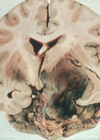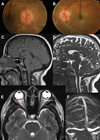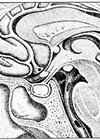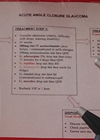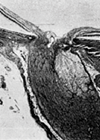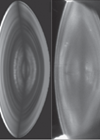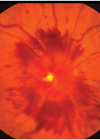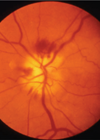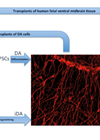Ophthalmology
Pituitary tumours: why are they so often missed?
Part 3: Clinical features, assessment and management (see also Part 2, and Part 1) As previously mentioned in this treatise [1] pituitary tumours are common, occur in all age groups and can present with anything from minimal visual symptoms to...
Optic nerve swelling – your survival guide (part 1)
Assessment of optic nerve appearance and functions is a daily routine in neuro-ophthalmology. Following a recent high profile court case there has been a significant increase in the amount of referral to ophthalmology departments to assess the optic nerve and...
You want to do paediatric ophthalmology? Seriously?
Completion of Core Training is approaching fast and you begin to wonder three things. One, where do you want to live? Two, is anyone going to be retiring there soon? Three, what subspecialty do you want to do? In an...
An update on idiopathic intracranial hypertension
The incidence of Idiopathic intracranial hypertension (IIH) is increasing, likely in line with the worldwide epidemic of obesity. To date, there have been revisions in the terminology used and diagnostic criteria for IIH; these recognise the need to exclude secondary...
Pituitary tumours: why are they so often missed?
Part 2: Clinical varieties, anatomical considerations and case report (see also Part 1 and Part 3) For ophthalmologists there are four types of pituitary tumour to be considered, three of which are named according to the hormone secreted, along with...
Under pressure: a tool to aid the non-ophthalmic practitioner in the timely management of acute angle closure
Acute angle closure is a true ophthalmic emergency that mandates timely diagnosis and treatment. The priority in initial management is to lower the intraocular pressure in an expeditious matter using medical treatments. The risk of irreversible glaucomatous optic neuropathy is...
Pituitary tumours: why are they so often missed?
Part 1: Introduction, historical background and Edinburgh connections (see also Part 2 and Part 3) Is there any ophthalmologist who has not missed a pituitary tumour? Hopefully this article will help those currently in practice to avoid such an embarrassment,...
Non-arteritic anterior ischaemic optic neuropathy (NA-AION): a review
Ischaemic optic neuropathy (ION) is the commonest adult optic neuropathy encountered today in our ageing population, is a common cause of irreversible visual loss and is usually associated with underlying vascular disease. The condition is classified as follows: (a) Anterior...
The refractive index in the eye lens – implications for clinical practice and optical design
The eye may appear to be a comparatively simple organ and yet its optical system is complex and continues to be a source of investigation and research. The major optical elements are considered to be the cornea and the lens...
Papilloedema: an update
Some readers may have seen a recent report in the national newspapers of the case of a teenage girl with persistent severe headache associated with a fatal brain tumour having been undiagnosed despite many consultations with her medical advisers. It...
Neuro-ophthalmic disease patterns in Southeast Asia with particular reference to giant cell arteritis
As indicated in an earlier article in Eye News [1] Dr Cullen was invited in 2000 to the Singapore National Eye Centre (SNEC) as visiting Professor with a specific remit to set up a specialist neuro-ophthalmology service, which was the...
Stem cell therapy for Parkinson’s disease: researching for an effective cure
Neurodegenerative diseases are characterised by the chronic and progressive loss of neurons, which in turn results in loss of cognitive and physical functions. The World Health Organization has estimated that the disability-adjusted life years lost from neurological disease was about...


